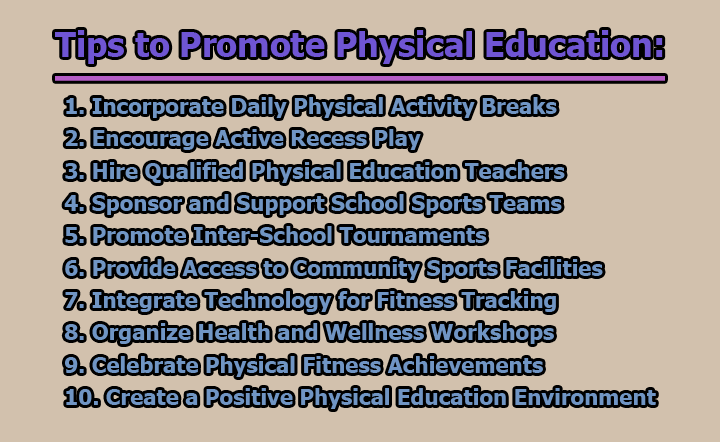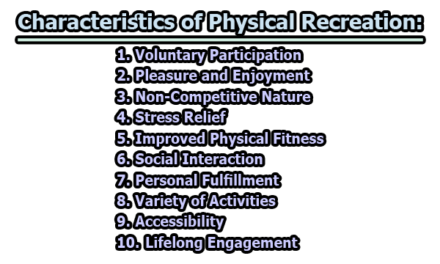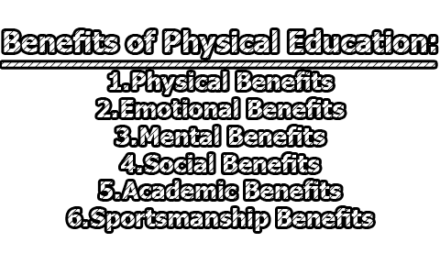Tips to Promote Physical Education:
In a world increasingly dominated by technology and sedentary lifestyles, the promotion of physical education stands as a beacon, guiding educators towards shaping well-rounded individuals. Recognizing the vital role physical activity plays in academic success, mental well-being, and overall health, teachers find themselves at the forefront of instilling a love for movement in their students. In the rest of this article, we will explore some of the essential tips to promote physical education.
1. Incorporate Daily Physical Activity Breaks: Recognizing the sedentary nature of modern classrooms, incorporating daily physical activity breaks is crucial to promoting physical education. These breaks, ranging from 5 to 10 minutes, offer students a chance to move, stretch, and refresh their minds. Simple exercises like jumping jacks, lunges, or quick yoga poses can be integrated seamlessly into the curriculum, enhancing blood circulation and boosting students’ energy levels. Teachers can utilize these breaks strategically, aligning them with transitions between subjects or before challenging tasks, thereby reinforcing the idea that physical activity contributes positively to mental focus and academic performance.
2. Encourage Active Recess Play: Recess is not just a time for students to unwind; it’s a golden opportunity to instill a love for physical play. Encourage organized activities during recess, promoting sports, games, and cooperative play. Provide equipment for activities like soccer, basketball, or even simple relay races. By fostering a culture of active recess, students are more likely to view physical play as an enjoyable and essential part of their daily routine. Teachers can actively participate or supervise these activities, creating a positive and inclusive environment that encourages all students to engage in physical play.
3. Hire Qualified Physical Education Teachers: The backbone of any successful physical education program is the expertise and guidance provided by qualified instructors. Hiring certified physical education teachers ensures that students receive structured, age-appropriate lessons that cater to their physical development. These professionals not only teach fundamental motor skills but also instill the importance of regular exercise and healthy habits. A dedicated PE teacher can tailor programs to accommodate varying fitness levels, fostering an inclusive environment where every student can thrive and find joy in physical activity.
4. Sponsor and Support School Sports Teams: Actively supporting and sponsoring school sports teams contributes significantly to the promotion of physical education. By investing in sports teams, schools create a platform for students to showcase their talents, fostering a sense of school pride and community spirit. The discipline, teamwork, and resilience developed through participation in sports extend beyond the field or court, influencing students positively in their academic and personal lives. Teachers and school administrators can attend games, organize pep rallies, and celebrate the achievements of these teams, reinforcing the school’s commitment to physical fitness.
5. Promote Inter-School Tournaments: Beyond intra-school sports activities, inter-school tournaments elevate the level of competition and excitement. Actively promoting and participating in such events not only exposes students to a broader range of sports but also cultivates a healthy spirit of competition and camaraderie. Inter-school tournaments provide students with a chance to interact with peers from different educational institutions, fostering social skills and teamwork. Teachers can coordinate and facilitate the school’s involvement in these tournaments, emphasizing the holistic benefits of sports participation and encouraging students to represent their school with pride.
6. Provide Access to Community Sports Facilities: Strengthening the ties between the school and the local community can significantly enhance the physical education experience for students. Collaborate with nearby sports facilities, gyms, or recreational centers to provide students with access to a broader range of physical activities. This partnership not only introduces students to different sports but also exposes them to diverse fitness options. Students can explore activities beyond the traditional school curriculum, promoting a lifelong appreciation for various forms of exercise. By sharing community resources, schools expand the scope of physical education and create opportunities for students to engage in activities they may not have encountered otherwise.
7. Integrate Technology for Fitness Tracking: Harness the power of technology to make physical education more interactive and personalized. Implement fitness trackers or mobile apps that allow students to monitor and track their physical activity levels. These tools can gamify fitness goals, turning exercise into a fun and engaging experience. Teachers can use data from these trackers to provide feedback, set challenges, and celebrate achievements. Introducing technology not only aligns with the digital interests of students but also empowers them to take an active role in managing their health and well-being.
8. Organize Health and Wellness Workshops: Extend the focus of physical education beyond just physical activity by organizing health and wellness workshops. Cover topics such as nutrition, mental health, and the overall importance of a balanced lifestyle. These workshops provide students with valuable information on maintaining a healthy body and mind. Educators can invite guest speakers, nutritionists, or mental health professionals to share insights and practical tips. By offering a holistic approach to well-being, schools contribute to the development of informed and conscientious individuals who understand the interconnectedness of physical and mental health.
9. Celebrate Physical Fitness Achievements: Acknowledge and celebrate the physical fitness achievements of students regularly. Recognize improvements in endurance, skill development, and participation in physical activities. Creating a system of rewards or certificates for milestones achieved encourages students to set and strive for personal fitness goals. Publicly celebrate these accomplishments through assemblies, newsletters, or dedicated recognition events. By highlighting individual and collective successes, schools reinforce the positive impact of physical education and inspire students to take pride in their physical achievements.
10. Create a Positive Physical Education Environment: Foster a positive and inclusive atmosphere within physical education classes. Emphasize the joy of movement and skill development over strict competition. Ensure that activities cater to various skill levels, allowing all students to participate and experience success. Encourage peer support and teamwork, creating an environment where everyone feels valued and motivated. By cultivating a positive atmosphere, teachers contribute to building students’ confidence in their physical abilities and foster a lifelong appreciation for the benefits of regular physical activity.
In conclusion, as educators, our commitment extends far beyond the confines of the classroom, encompassing the holistic development of our students. The journey to promote physical education involves more than just organized sports; it’s about cultivating habits that last a lifetime. By incorporating above tips, we embark on a mission to instill in our students a profound understanding of the inseparable connection between physical well-being and overall success. In doing so, we contribute not only to the health and fitness of our students but also to the creation of a generation that values the importance of an active lifestyle, setting the stage for a healthier and more prosperous future.

Library Lecturer at Nurul Amin Degree College










